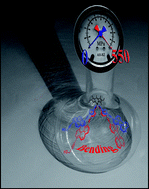Resolving the contribution due to Förster-type intramolecular electronic energy transfer in closely coupled molecular dyads†
Abstract
This work examines the electronic energy-transfer (

* Corresponding authors
a
Molecular Photonics Laboratory, School of Chemistry, Bedson Building, Newcastle University, Newcastle upon Tyne, United Kingdom
E-mail:
anthony.harriman@ncl.ac.uk
Fax: +44 191222 8660
Tel: +44 191222 8660
b Laboratoire de Chimie Organique et Spectroscopies Avancées, Ecole Chimie, Polymères et Macromoléculaires, Université Louis Pasteur, 25 rue Becquerel, 67087 Strasbourg Cedex 02, France
This work examines the electronic energy-transfer (

 Please wait while we load your content...
Something went wrong. Try again?
Please wait while we load your content...
Something went wrong. Try again?
M. A. H. Alamiry, J. P. Hagon, A. Harriman, T. Bura and R. Ziessel, Chem. Sci., 2012, 3, 1041 DOI: 10.1039/C2SC00948J
To request permission to reproduce material from this article, please go to the Copyright Clearance Center request page.
If you are an author contributing to an RSC publication, you do not need to request permission provided correct acknowledgement is given.
If you are the author of this article, you do not need to request permission to reproduce figures and diagrams provided correct acknowledgement is given. If you want to reproduce the whole article in a third-party publication (excluding your thesis/dissertation for which permission is not required) please go to the Copyright Clearance Center request page.
Read more about how to correctly acknowledge RSC content.
 Fetching data from CrossRef.
Fetching data from CrossRef.
This may take some time to load.
Loading related content
